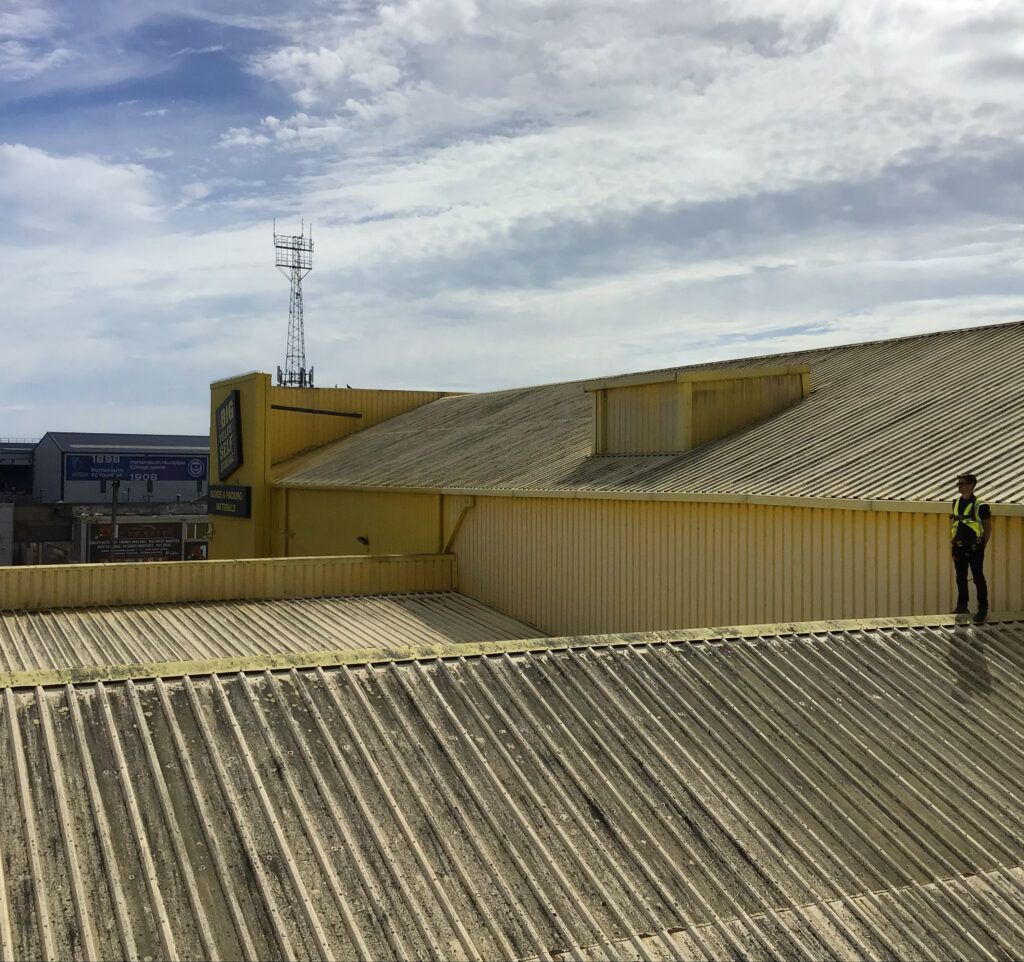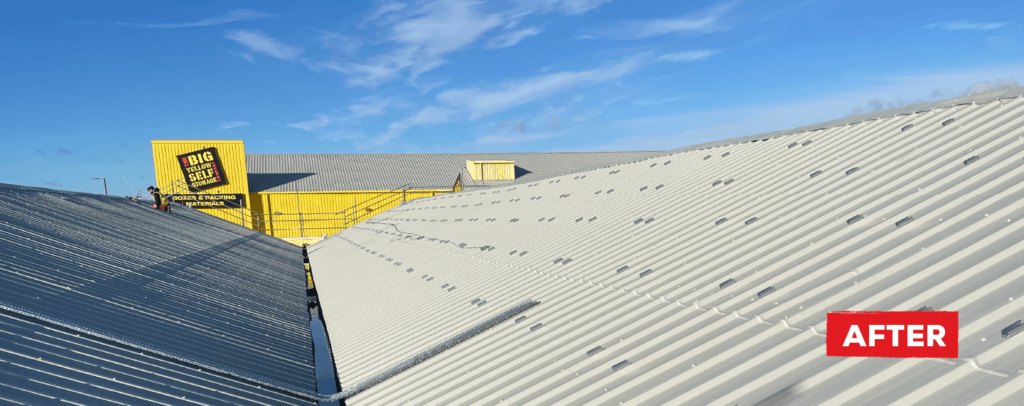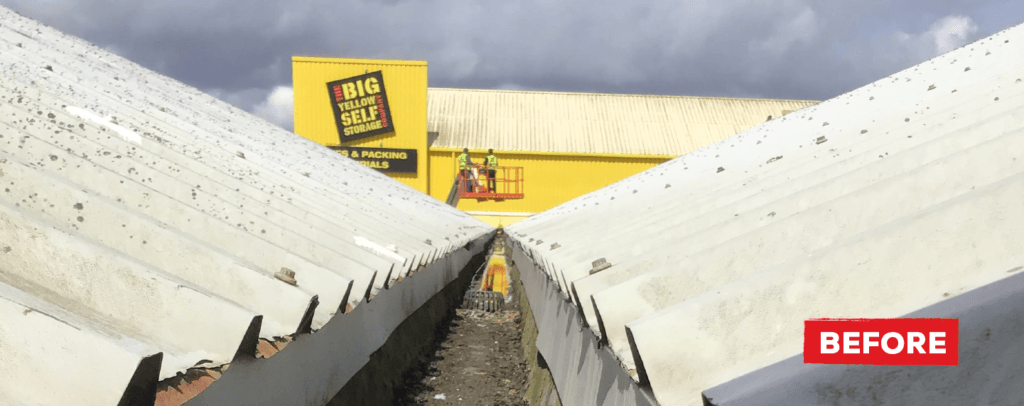Carbon reduction with Sharmans metal roof refurbishment systems
38%
A recent UN Report found that the global building industry contributes 38% of total global emissions, while in the UK alone the built environment (buildings and infrastructure) is responsible for 25% of UK carbon emissions.
80%
The UK government has committed to an 80% carbon reduction by 2050 through the Net Zero Programme.
33%
In line with this, 33% of businesses are integrating a sustainability strategy as part of their corporate social responsibility.
28%
A staggering 28% of the greenhouse gases produced worldwide come from the energy used to power, heat and cool buildings. Facing the real possibility of a global emergency, changes need to be made to conserve and protect the environment.

Sustainability high on the agenda
With sustainability high on the agenda, businesses are now seeking a more environmentally friendly source of energy, as such, many are now turning to solar power. Not only do they cut emissions and greenhouse gases, but solar panel systems also have the potential for payback in as little as 10 years; a great incentive for businesses to make the switch to solar.
Prior to the commencement of any commercial solar installation, one major consideration must be the condition of the metal roof. It is crucial that the remaining life cycle of the roof aligns with the expected life cycle of the solar PV system. If a roof is allowed to degrade, then it will reach its lifecycle after 25 years, the same as a solar PV system.
A decision would need to be made regarding the replacement, repair or refurbishment of the roof after 10 years of its lifecycle.
Replace, repair or refurbish?
The age-old debate between replacing, repairing and refurbishing stands stronger than ever in the roofing industry. However, refurbishment with the correct products is the most sustainable option due to the amount of embodied carbon that can be saved.
Firstly, the cost and complexity of replacement can be an issue, not to mention the business disruption a new roof can cause. In addition to this, there is a common misconception that roof replacement will help to reduce carbon emissions and promote sustainability.
Whilst a new roof may make a building more energy efficient, there are a number of other factors to consider. Raw materials must be sustainably sourced, manufactured and shipped to site, all of which add to the project’s carbon footprint.

Looking at the possibility of repairs
Although usually the cheapest option, patch repairs are generally not the most effective way to bring the roof back up to standard. Repairs may seem appealing in the form of cost and low disruption, but there is the possibility of recurring issues with the roof.
Consideration should also be given to the life cycle of the roof which needs to be in line with the PV system to avoid any future upheaval. Repairs do not provide this and are just another missed opportunity to cut emissions.
The options beyond replacement or repair
Putting replacement and repair to one side, the other two options to be considered are oversheeting and refurbishment.
The oversheeting process involves new metal sheets placed over the top of the existing roof rather than removing and replacing them with a new one. However, considerations need to be made to the extra weight this method brings, along with the structural integrity.
Another consideration is that it does not provide any protection against the life cycle of the roof, meaning it will still go through the process of breakdown which in turn results in more disruption, additional cost and potentially adds to the carbon footprint rather than reducing it.
With these factors in mind, it poses the question of whether oversheeting is an environmentally friendly and sustainable choice.
Metal roof refurbishment
Choosing roof refurbishment over a replacement offers the same guaranteed life span, but at a fraction of the cost. Not to mention the environmental benefits it carries as no new metal is required, significantly reducing the amount of embodied carbon produced.
The best option for refurbishing metal roof sheets is applying silicone coating products. These products address the issues of metal roof fabric degradation and cut edge corrosion, therefore extending the life cycle of a metal roof by up to 25 years.
Why choose Sharmans roof refurbishment systems in relation to reducing your carbon footprint?
Sharmans market leading roof coating systems, Delcote® and Seamsil®100, are used to bring the roof back up to standard. They also have the added benefit of coming with a 25 year product guarantee, perfectly aligned with the life cycle of PV systems.



Roof refurbishment systems
An advanced metal roof coating system, Delcote® provides a 25 year product guarantee and is designed to extend the life and sustainability of any commercial metal roof.
The cut edge corrosion system, Seamsil®100 is backed by an industry leading 15 year product guarantee and is precisely engineered to prevent cut edge corrosion.
Did you know that refurbishing a metal roof using Sharmans roof refurbishment systems incurs 5x less embodied carbon than a standard roof replacement?
With this in mind, businesses that prioritise reducing their carbon footprint through solar PV installations should opt for roof refurbishment when looking to bring their roof back to standard. The best products to do this? Sharmans market leading roof refurbishment systems.
